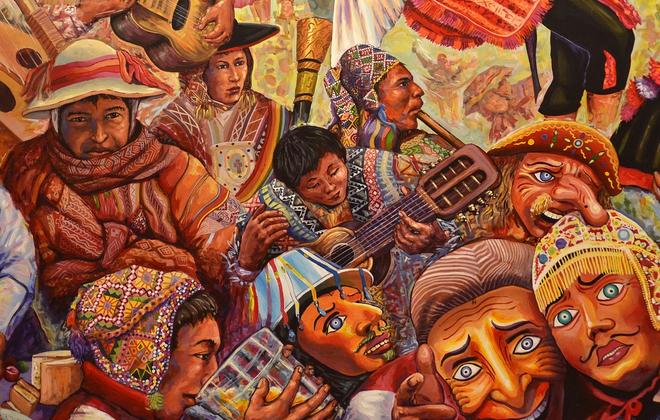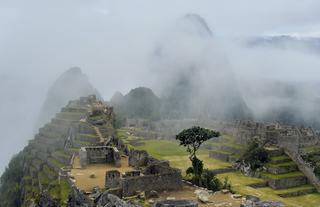Peru is het meest bekend om de heilige archeologische vindplaats Machu Picchu - elk jaar bezocht door tientallen onverschrokken wandelaars die de zware hellingen van de Inca Trail trotseren om de eeuwenoude ruïnes te verkennen. De attracties van het land reiken veel verder dan de mystieke allure van deze legendarische locatie en omvatten stranden met palmbomen, schilderachtige Andesdorpen en archeologische schatten die honderden jaren ouder zijn dan Machu Picchu - allemaal doordrenkt met de rijke mix van inheemse en koloniale culturen van het land. Even verleidelijk zijn de exotische uithoeken van het Amazone-regenwoud van Peru; Lima's prachtige eetgelegenheden, prachtige architectuur en bruisend nachtleven; de glinsterende, bergachtige wateren van het Titicacameer; en de bruisende stad Cusco, door de Inca's aangeduid als 'het centrum van de wereld'.
De hoofdstad van Peru is een fantastische stad om te tour, bezaaid met een veelheid aan culturele bezienswaardigheden en prachtig bewaard gebleven architectuur. Opgericht door de veroveraar Francisco Pizarro in 1535, werd Lima voor het eerst uitgeroepen tot “Stad der Koningen” — een bijbelse verwijzing naar de “Drie Wijzen van het Oosten” — voordat de naam werd veranderd door de Spaanse kolonialisten. De belangrijkste historische gebouwen bevinden zich rond het Plaza Mayor, het meest opvallende is het regeringspaleis, waar men nog steeds de verandering van de wacht van de Húsares de Junín kan waarnemen. De prachtige kathedraal en de verschillende kleine paleizen en koloniale balkons spelen ook hun rol in de schoonheid van de stad. Een ander hoogtepunt is het beroemde Larco Herrera Museum, het documenteren van de millennial culturen die voorafgingen aan de Inca beschaving en bevat een onschatbare verzameling pre-Columbiaanse artefacten, waaronder enkele van Zuid-Amerika's mooiste pre-Inca erotische aardewerk.




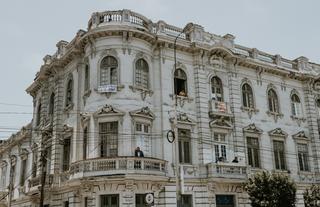
A lunar-like landscape meets the ocean at Paracas, a small beach town on the Paracas peninsula in southern Peru. Stark cliffs drop into the ocean and rugged promontories jut out to sea, offering a beachfront residence to the flocks of marine birds in the area. Many visitors travel to Paracas to enjoy the beaches and the perks of a resort town, however it’s the adjacent marine reserve and outlying islands that most intrigue travellers, offering the chance to view penguins, sea lions, dolphins and seals in their natural habitat. Don’t miss the Paracas Candelabra, a mystic geoglyph etched into the rock and dating back to 200 BCE.




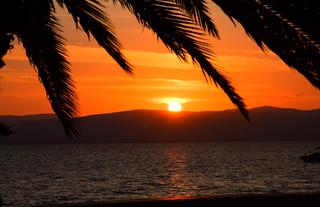
The hamlet of Huacachina is located in southwestern Peru, about five kilometers from the city of Ica. Set on a small lagoon surrounded by desert dunes, it seems almost otherworldly - a tiny spot of paradise amidst a rolling sea of sand. Lore has it that the oasis was created when a beautiful princess was discovered by a young hunter while having her bath there. She fled in alarm, leaving behind a pool of bathwater. Travellers can visit the lakeshore statue that commemorates the legend, enjoy a tranquil row boat ride on the lagoon, sample the local eateries, or go sandboarding or dune buggying. The town of Paracas lies roughly an hour’s drive away on Peru’s west coast and is the launching point for trips to the Ballestas Islands, where you can see rare Humboldt penguins and the mysterious ‘Candelabra’ carving - a vast, ancient geoglyph etched into a cliff face.




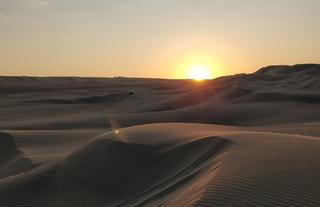
De prachtige stad Arequipa is een perfecte mix van oude architectonische schatten en moderne gebouwen, gezegend met gemiddeld 300 dagen zonnig weer per jaar. Het staat ook bekend als 'The White City' — een bijnaam die voortkomt uit de talrijke witte gebouwen, die een opvallend contrast vormen met de groene omgeving. Het is Peru's meest elegante stad en de beste plek om te bezoeken als je een fijnproever bent op zoek naar heerlijke eetgelegenheden, met een scala aan fantastische restaurants met pittige lokale specialiteiten zoals rocoto relleno, chupe de Camarones en ocopa. Deze stad heeft een illustere geschiedenis en zijn onderscheidende tradities maken het tot een werkelijk unieke Peruaanse bestemming.
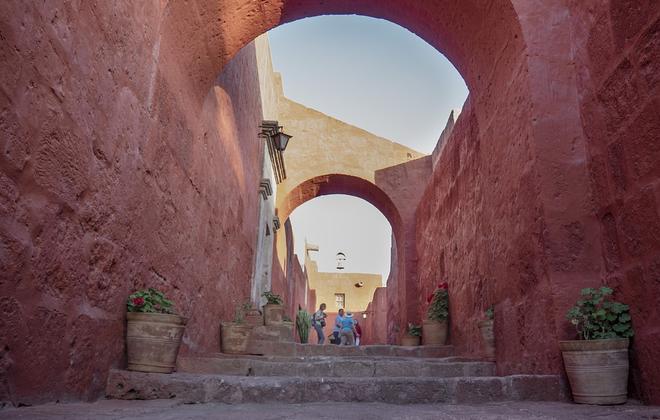



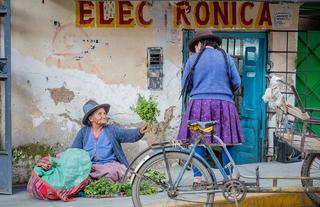
Set on the shores of glistening Lake Titicaca, on the Altiplano of Peru, this large city is dubbed the ‘folklore capital' of the country, well known for its traditional music and dance. It is also famous for its incredible collection of floating islands - man-made islands created from reeds, which exhibit the unique survivalist culture that has been alive here since pre-Incan times. Other highlights include visits to the atmospheric, historical Church of San Pedro, the gorgeous Sistine Chapel of the Americas, and a stroll along the boardwalk on the shoreline of Lake Titicaca. Active types should take on the challenge to climb up the 700 steps to the Kuntur Wasi viewpoint, which is presided over by a massive metal condor sculpture, for the reward of breathtaking vistas across the city and Lake Titicaca beyond.





Once called the ‘Navel of the World’ by the Incas, Cusco rises in the southern Andes of Peru, where colonial grandeur meets the enduring stonework of the Inca Empire. A UNESCO World Heritage Site, it serves as the main gateway to Machu Picchu, the Sacred Valley, and surrounding ruins. At its centre, the Plaza de Armas—once Huacaypata—remains alive with cafés, arcades, and the 16th-century Cusco Cathedral, built from Sacsayhuamán’s stones. Nearby, the San Blas district unfolds with whitewashed adobe houses, blue balconies, and workshops where artisans craft metalwork, woodcarvings, and sacred art. Across the city, layers of history reveal themselves in landmarks such as the Korikancha, the Inca street of Hatun Rumiyoc with its twelve-angled stone, the Museum of Colonial Art, and the ancient shrines and water temples scattered through the surrounding hills.
